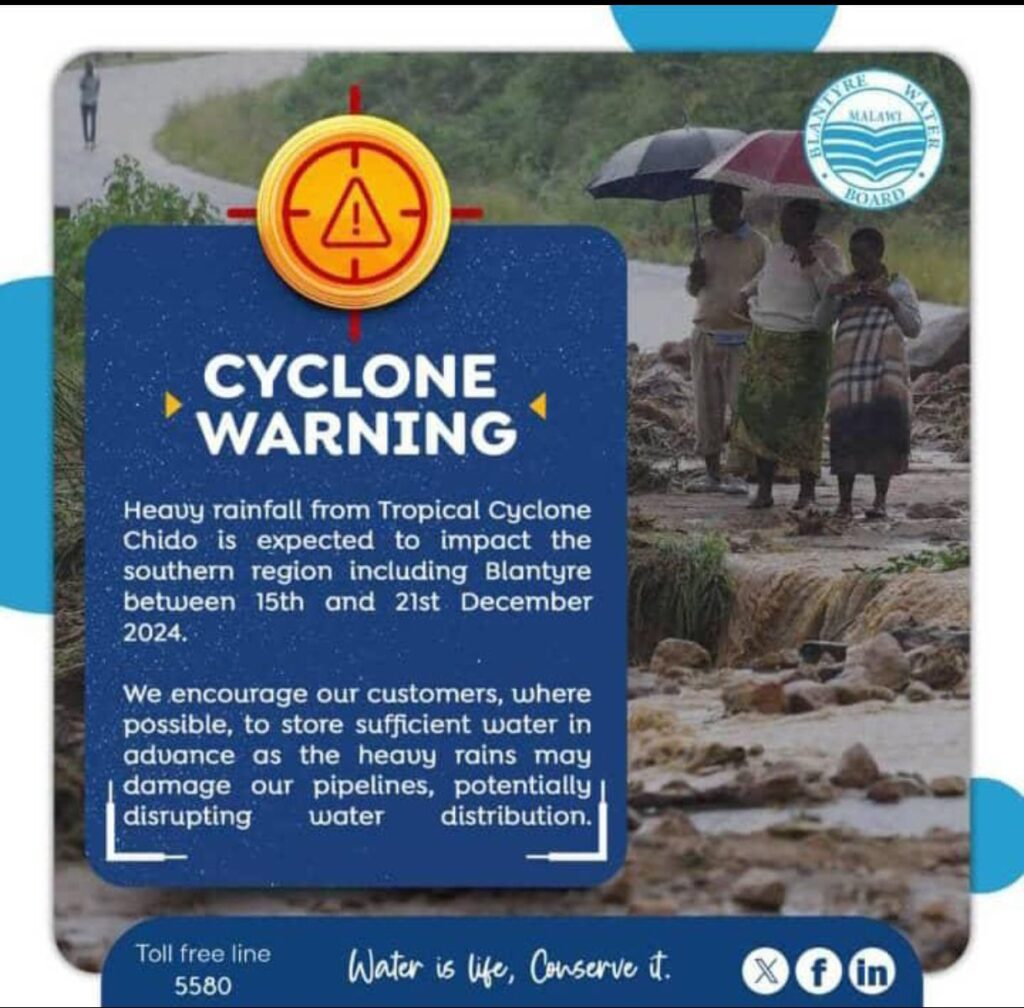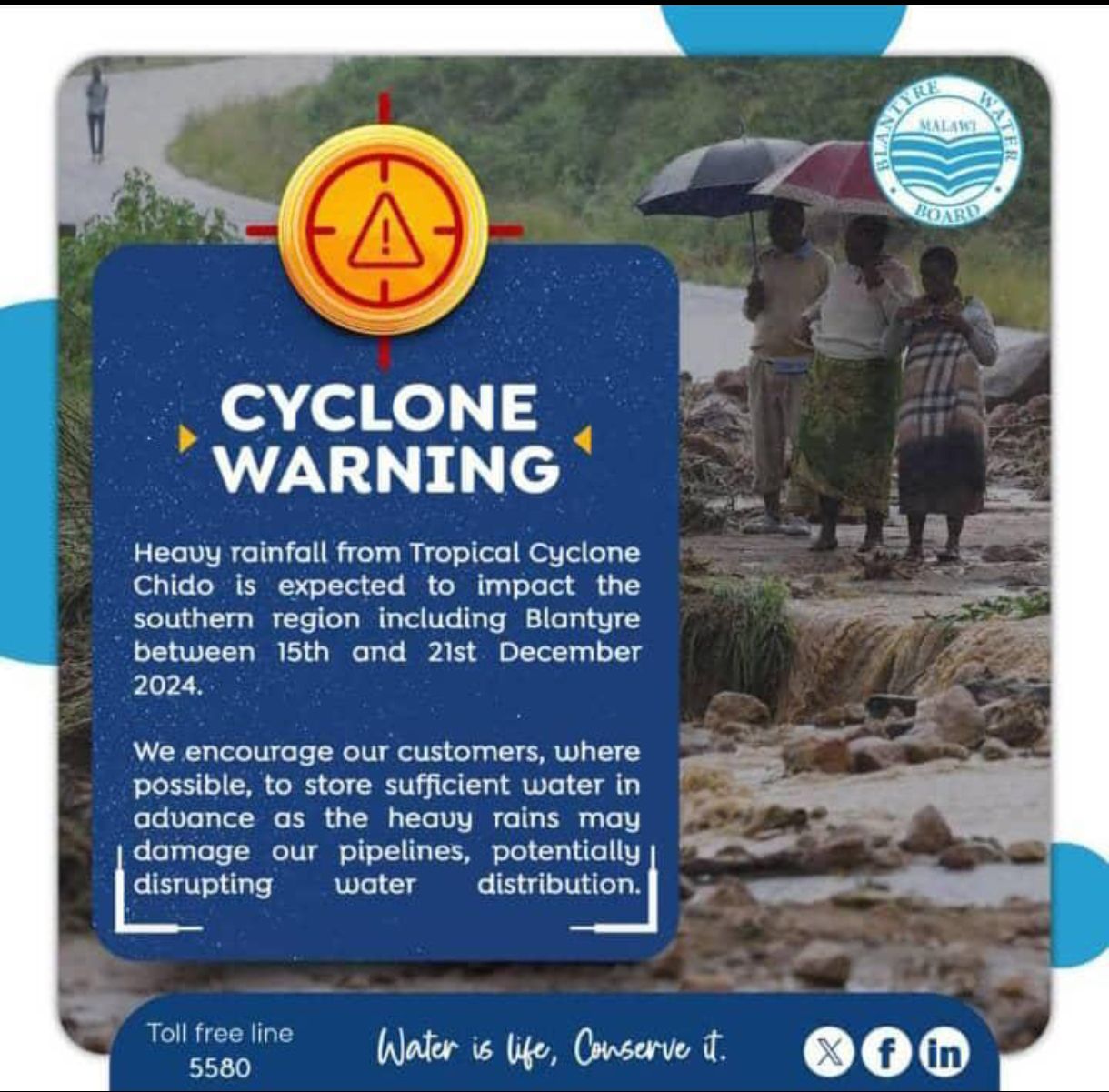By Twink Jones Gadama
Cyclones, also known as hurricanes or typhoons depending on their location, are among the most powerful and destructive natural phenomena on Earth. Their ability to wreak havoc on communities, economies, and ecosystems makes them a subject of intense study and preparation. One aspect of cyclones that often piques public interest is their naming conventions. The names assigned to these storms serve not only a practical purpose but also carry cultural significance and reflect the evolving nature of meteorological practices. This article delves into the intricacies of cyclone naming, exploring its historical context, the criteria used, and the implications of these names on public perception and safety.
Historically, the naming of cyclones can be traced back to the early 20th century. Before formal naming conventions were established, storms were often referred to by the year and the order in which they occurred, such as “the 1933 hurricane.” However, this method proved to be cumbersome and confusing, particularly when multiple storms occurred simultaneously. In the 1950s, the United States began using a system of names for tropical storms, which was later adopted by other countries and organizations. The World Meteorological Organization (WMO) now oversees the naming process, ensuring a standardized approach across different regions.
The current naming system involves predetermined lists of names that are rotated every six years. Each list contains a mix of male and female names, reflecting a commitment to gender equality in meteorological practices. For instance, the Atlantic hurricane season utilizes six lists of names, with each list containing 21 names. The letters Q, U, X, Y, and Z are typically omitted due to the scarcity of names starting with those letters. When a storm is particularly deadly or costly, its name is retired from the list to avoid confusion and sensitivity in future seasons. This practice underscores the serious implications of cyclone naming, as certain names can evoke memories of devastation and loss.

The naming of cyclones is not merely a bureaucratic exercise; it has significant implications for public awareness and safety. A well-chosen name can enhance communication and understanding among the public, media, and emergency services. For example, names that are easy to pronounce and remember can facilitate quicker dissemination of information, which is crucial during a storm’s approach. In contrast, complex or unfamiliar names may hinder effective communication, potentially putting lives at risk. This is particularly important in regions where communities may not have access to advanced warning systems or where literacy rates are low.
Cultural considerations also play a vital role in the naming of cyclones. Different regions have unique naming conventions that reflect local languages, traditions, and values. For instance, in the Indian Ocean, cyclones are named based on suggestions from member countries of the regional meteorological organization. This practice not only fosters a sense of ownership among nations but also ensures that the names resonate with local populations. Cyclone Chido, for example, may have been named based on a cultural or linguistic significance in the region it affected, highlighting the importance of local context in the naming process.
The phenomenon of El Niño, while not a cyclone itself, is often associated with changes in weather patterns that can lead to increased cyclone activity. The naming of cyclones in relation to El Niño events reflects the interconnectedness of meteorological phenomena. Cyclones that develop during an El Niño year may be more intense or frequent, prompting meteorologists to pay close attention to these storms. The use of names like Cyclone Elnino serves to remind the public of the broader climatic context in which these storms occur, emphasizing the need for preparedness and awareness.
In recent years, the impact of climate change on cyclone patterns has become a pressing concern. As global temperatures rise, the intensity and frequency of cyclones are expected to increase, leading to more severe weather events. This shift raises questions about the adequacy of current naming conventions and whether they can effectively convey the urgency of the situation. As storms become more unpredictable and dangerous, the need for clear and impactful names becomes even more critical. The challenge lies in balancing the traditional aspects of naming with the need for a more proactive approach to climate-related disasters.
Moreover, the psychological impact of cyclone names cannot be overlooked. Names can evoke emotions and memories, influencing how individuals perceive and respond to storms. For instance, a name associated with a particularly devastating storm may instill fear and anxiety, while a less memorable name might lead to complacency. This psychological dimension underscores the importance of careful consideration in the naming process, as it can shape public behavior and preparedness.
In conclusion, the naming of cyclones is a multifaceted process that intertwines historical practices, cultural significance, and practical considerations. As we continue to grapple with the realities of climate change and its impact on weather patterns, the importance of effective cyclone naming will only grow. Names serve as more than mere labels; they are vital tools for communication, awareness, and preparedness. As we move forward, it is essential to recognize the power of names and their role in shaping our understanding of these formidable natural events. The art and science of cyclone naming will continue to evolve, reflecting the changing landscape of meteorology and the communities affected by these storms.



